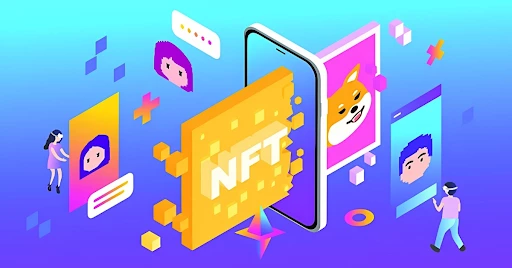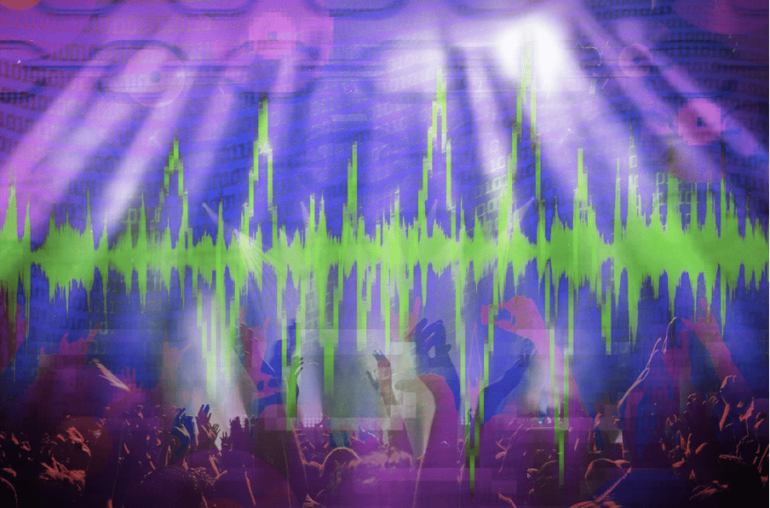The Nationthailand
Add to Home Screen.
If one could understand and utilize NFT properly, it would effectively boost the advantages for brands in this digital economy.
Let’s get to know NFT through this article, along with its benefits that different brands can apply to their business, and we will also look at some of the interesting ones.
What is an NFT?
NFT stands for Non-Fungible Token, which refers to "tokens with unique characteristics," making NFTs incapable of being used interchangeably.
Like Bitcoin or Ether (Ethereum), NFT is a type of digital asset created on a blockchain, but it differs from Bitcoin in that Bitcoin is a fungible asset without unique characteristics. Therefore, each bitcoin holds equal value and can be used interchangeably.
Since NFT serves as a representation of unique items such as artworks, videos, music, real estate, and collectables, such unique assets are represented through digital tokens, allowing them to be scarce in quantity, just as Bitcoin and blockchain were developed to create scarcity in digital currencies.
Benefits of NFT for Marketing
As mentioned in the first part of the article, NFT technology can effectively help develop marketing strategies for different brands, if used appropriately. We will take a look at the benefits of NFT for marketing purposes, which can be divided into sections with use cases as follows.

1.NFT as collectible
Because NFT creators can determine the quantity or rarity of their NFTs, they can create NFTs with special features such that customers or fans can collect them by participating in certain activities, for instance, an offline Meet & Greet with a scannable QR code, purchasing their products above a specified value, or even winning a lucky draw. Once they receive the NFTs, they can simply resell them within the fandom in addition to collecting them.
For example, a global soft drink brand like Pepsi created its own NFT collection under the name "The Mic Drop" to show off the brand’s strength as a leader in music and Pop culture. This, therefore, gave birth to the NFT collection of microphone artworks that integrate the various flavours of the drink for fans to collect.
2. Help modernize the brand image
Even if the brand sells everyday products like food, medicine, or appliances that are seemingly unrelated to the digital system, it can still project a more modern brand image by simply releasing its NFT collections for customers to collect, and these tokens can be tied to privileges like discounts, collecting points, etc. This approach would effectively attract customers of the new generation.
For instance, Taco Bell, a Mexican fast food franchise, was one of the first companies to enter the NFT circle, with the collection of Taco NFTs launching in March 2021. The response was overwhelming, and the NFTs were sold out in less than half an hour. On top of that, some items were resold for as much as $180,000.

3. Keep as a memory
Have you ever had to keep your physical ticket to your favourite artist’s concert or a major sporting match as a good memory to look back on in the future? However, with NFT nowadays, not only can it be stored digitally in the wallet, but even if the ticket issuer closes down their business, the NFT would still be stored in the blockchain and never disappear.
For example, an American football league like the NFL partnered with Ticketmaster to issue NFT tickets as an exclusive giveaway to American football fans who watched over 100 matches in the 2022 season.
What to consider when using NFT for Marketing
The following are the steps that business owners must take in order to implement NFT for their brand:
1.Define the target audience
Customers who are likely to be interested in NFTs can be divided into three major groups for targeting:
1.1 Collector – This group frequently buys to collect for personal liking and may keep the NFTs in the long run without reselling or with an extremely low chance of reselling. They tend to purchase the NFTs of their interest via platforms like Bitkub NFT, OpenSea, Looksrare, etc.
1.2 Creator – Because this group is also a creator or an artist themselves, they may wish to purchase the NFT works in order to establish connections, and they typically have a fan base who supports them, so it is also an opportunity for them to help enhance awareness of the brand's NFT.
1.3 Investor – This group is likely to represent the majority of the target audience since this group seeks to speculate on profits in both the short and long term. Though, the purchasing power will also vary from low to high.
2.Communication channels
Nowadays, the best way for brands to promote the existence of their NFTs to their target audiences is inevitably through various social media platforms, each with its own unique target audiences and strengths. The platforms of interest are as follows:
2.1 Facebook – The survey found that 86% of Thai internet users aged 18 – 29 use Facebook, which can be considered the main channel most entrepreneurs would use to communicate with Thai people. In addition, Facebook has various fan pages and NFT-related groups, such as the Bittoon page, NFT and Crypto Art Thailand group, etc.
2.2 Instagram – IG stands out in that it focuses on presenting content through photos or artworks, making it ideal for promoting NFTs, which are artworks. Moreover, the survey found that 83% of users tend to use IG to seek out new products and services.
2.3 Twitter – Twitter is a perfect channel for spreading news quickly. You can better target people who are likely to be interested in NFTs by using hashtags such as #NFTs, #OpenSea, #nftart, #NFTTHAILAND, #NFTthai, etc.
2.4 Discord / Reddit / Telegram – These platforms are similar to web boards, where users can open forums to discuss their topics of interest, and there are also exclusive rooms or groups for people who share common interests, like how Reddit has related Subreddit like r/NFT, r/NFTExchange, etc.
3. Content creation
Once you have defined your target audience and selected a communication channel, the next step is to create content to promote your brand's NFT, from the getting-to-know stage up to the post-purchase, as follows:
3.1 Trigger & Awareness – Initially, the target audience is not yet familiar with the brand's NFT, hence, the appropriate content would first establish an understanding and knowledge of the NFT, such as what it is and how it can be traded.
3.2 Consideration – Once the customer has an understanding of NFT, the next step is to begin creating content related to a brand's NFT specifically. This could be a social media post outlining the advantages and distinctive points of their NFT.
3.3 Conversion – After the customer is aware of the brand's NFT products, the following step is to encourage their buying decisions. The brand can create content comparing their NFT to other companies' NFTs or organize an AMA so that customers who still have doubts can ask directly from the expert, etc.
3.4 Delight & Awareness – Once the customer has decided to purchase the NFT, the brand should consider expressing gratitude to the customer. This could be a thank-you email, and after-sales services, such as organizing special events for NFT holders to make them feel like buying that NFT was worthwhile, should also be considered.
Summary
NFT is still in its infancy and is gaining attention from business owners across the world who seek to apply it to their brands. NFT can offer brands the benefit of being a digital collectable for fans or keeping as a good memory, and it can also enhance the brand image to appear more modern in the eyes of the new generation.
However, before implementing NFT for your brands, it is crucial for entrepreneurs to have a good understanding of the first, together with a proper marketing strategy, to fully exploit the potential of NFT.



